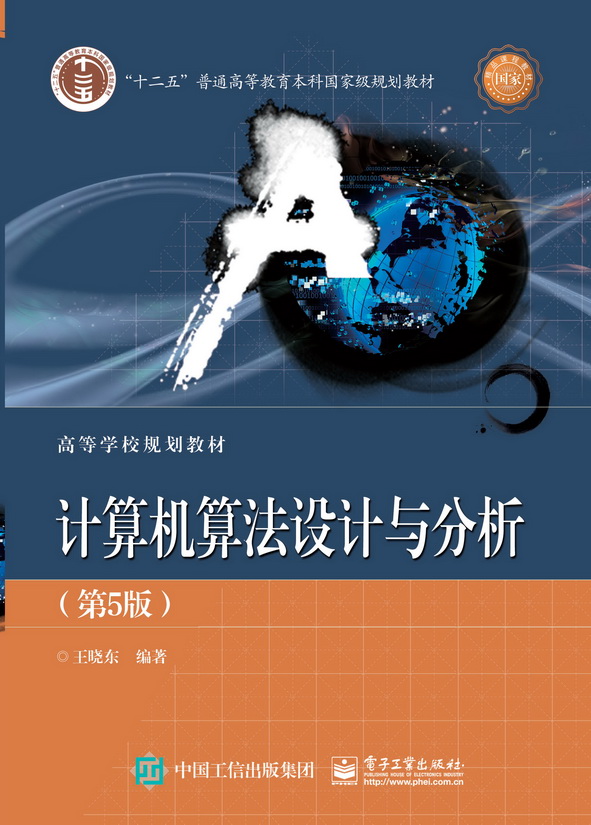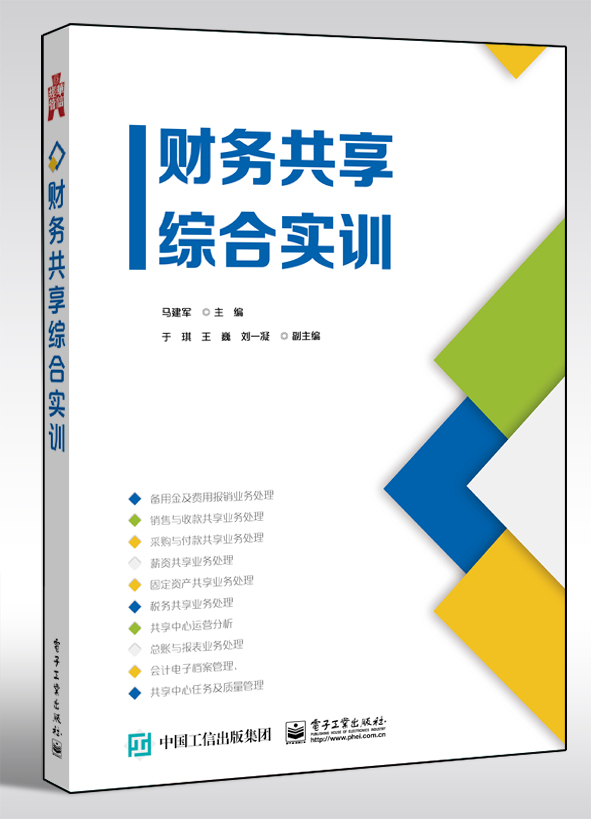统计学专业英语教程
丛 书 名:
高等学校专业英语教材
作 译 者:王忠玉,宋要武
出 版 日 期:2016-08-01
书 代 号:G0289280
I S B N:9787121289286
图书简介:
本书内容分为三部分:第一部分是描述统计学,共有7个单元,包括统计学初步、单变量数据的描述分析、两个变量数据的描述分析、概率初步、离散概率模型、连续概率模型、抽样分布和中心极限定理;第二部分是推断统计学(数理统计学),共有4个单元,包括统计推导初步、一个总体的统计推断、两个总体的统计推断、简单回归、回归的统计分析;第三部分是统计学与数据科学专题,只有1个单元。 和同类书籍相比,本书具有如下特点:(1)比较系统地阐述基础统计学的知识,即以初阶统计学的基本内容为主体,又适当地加入并介绍中阶统计学的部分内容;(2)在大多数章后,我们提供课外进一步阅读和学习的补充知识,有统计学家简介等;(3)紧跟当今时代发展,给出“统计学与数据科学”的阅读学习内容。另外,在每一章前面,我们精心选取了一些著名统计学家或教授的名言或警句,同时,特别绘制了有趣的漫画。本书提供部分习题参考答案、教学PPT、音频资料、部分课文参考译文及其他辅助资料,读者可从华信教育资源网www.hxedu.com.cn免费下载,也可扫描二维码获取。 本书适合于各个专业对统计学专业英语感兴趣的大学生,学习双语统计学的统计学专业大学生,希望学习和掌握中阶统计学的相关专业的低年级研究生,以及有关的科研人员等。
-
配 套 资 源
-
图 书 内 容
内容简介
本书内容分为三部分:第一部分是描述统计学,共有7个单元,包括统计学初步、单变量数据的描述分析、两个变量数据的描述分析、概率初步、离散概率模型、连续概率模型、抽样分布和中心极限定理;第二部分是推断统计学(数理统计学),共有4个单元,包括统计推导初步、一个总体的统计推断、两个总体的统计推断、简单回归、回归的统计分析;第三部分是统计学与数据科学专题,只有1个单元。 和同类书籍相比,本书具有如下特点:(1)比较系统地阐述基础统计学的知识,即以初阶统计学的基本内容为主体,又适当地加入并介绍中阶统计学的部分内容;(2)在大多数章后,我们提供课外进一步阅读和学习的补充知识,有统计学家简介等;(3)紧跟当今时代发展,给出“统计学与数据科学”的阅读学习内容。另外,在每一章前面,我们精心选取了一些著名统计学家或教授的名言或警句,同时,特别绘制了有趣的漫画。本书提供部分习题参考答案、教学PPT、音频资料、部分课文参考译文及其他辅助资料,读者可从华信教育资源网www.hxedu.com.cn免费下载,也可扫描二维码获取。 本书适合于各个专业对统计学专业英语感兴趣的大学生,学习双语统计学的统计学专业大学生,希望学习和掌握中阶统计学的相关专业的低年级研究生,以及有关的科研人员等。图书详情
ISBN:9787121289286开 本:16开页 数:396字 数:824.0本书目录
目 录 Part I Descriptive Statistics Unit 1 Statistics 3 1.1 What is Statistics? 4 1.1.1 Meanings of Statistics 4 1.1.2 Definition of Statistics 5 1.1.3 Types of Statistics 6 1.1.4 Applications of Statistics 6 1.2 The language of Statistics 9 1.2.1 Population and Sample 9 1.2.2 Kinds of Variables 11 1.3 Measurability and Variability 14 1.4 Data Collection 16 1.4.1 The Data Collection Process 17 1.4.2 Sampling Frame and Elements 18 1.5* Single-Stage Methods 21 1.5.1 Simple Random Sample 21 1.5.2 Systematic Sample 22 1.6* Multistage Methods 25 1.7* Types of Statistical Study 27 1.8 The Process of a Statistical Study 31 Glossary 34 Reading English Materials 35 Passage 1. What is Statistics? 35 Passage 2. From Data to Foresight 35 Problems 36 Unit 2 Descriptive Analysis of Single-Variable Data 40 2.1 Graphs, Pareto Diagrams, and Stem-and-Leaf Displays 41 2.1.1 Qualitative Data 41 2.1.2 Quantitative Data 43 2.2 Frequency Distributions and Histograms 47 2.2.1 Frequency Distribution 47 2.2.2 Histograms 51 2.2.3 Cumulative Frequency Distribution and Ogives 53 2.3 Measures of Central Tendency 55 2.3.1 Finding the Mean 55 2.3.2 Finding the Median 56 2.3.3 Finding the Mode 57 2.3.4 Finding the Midrange 58 2.4 Measures of Dispersion 60 2.4.1 Sample Standard Deviation 62 2.5 Measures of Position 64 2.5.1 Quartiles 64 2.5.2 Percentiles 64 2.5.3 Other Measures of Position 66 2.6 Interpreting and Understanding Standard Deviation 70 2.6.1 The Empirical Rule and Testing for Normality 70 2.6.2 Chebyshev’s Theorem 72 Glossary 74 Problems 75 Unit 3 Descriptive Analysis of Bivariate Data 79 3.1 Bivariate Data 80 3.1.1 Two Qualitative Variables 80 3.1.2 One Qualitative and One Quantitative Variable 82 3.1.3 Two Quantitative Variables 83 3.2 Linear Correlation 85 3.2.1 Calculating the Linear Correlation Coefficient, r 86 *3.2.2 Causation and Lurking Variables 89 3.3 Linear Regression 91 3.3.1 Line of Best Fit 92 3.3.2 Making Predictions 97 Reading English Materials 99 Passage 1. The First Regression 99 Passage 2. Simpson’s Paradox 99 Problems 100 Unit 4 Introduction to Probability 104 4.1 Sample Spaces, Events and Sets 105 4.1.1 Introduction 105 4.1.2 Sample Spaces 105 4.1.3 Events 106 4.1.4 Set Theory 108 4.2 Probability Axioms and Simple Counting Problems 109 4.2.1 Probability Axioms and Simple Properties 109 4.2.2 Interpretations of Probability 111 4.2.3 Classical Probability 112 4.2.4 The Multiplication Principle 113 4.3 Permutations and Combinations 115 4.3.1 Introduction 115 4.3.2 Permutations 116 4.3.3 Combinations 118 4.3.4 The Difference Between Permutations and Combinations 120 4.4 Conditional Probability and the Multiplication Rule 122 4.4.1 Conditional Probability 122 4.4.2 The Multiplication Rule 123 4.5 Independent Events, Partitions and Bayes Theorem 124 4.5.1 Independence 124 4.5.2 Partitions 125 4.5.3 Law of Total Probability 126 4.5.4 Bayes Theorem 126 4.5.5 Bayes Theorem for Partitions 127 Reading English Materials 130 Passage 1. Probability and Odds 130 Passage 2. The Relationship between Odds and Probability 130 Passage 3. How the Odds Change across the Range of the Probability 131 Problems 132 Unit 5 Discrete Probability Models 134 5.1 Introduction, Mass Functions and Distribution Functions 135 5.1.1 Introduction 135 5.1.2 Probability Mass Functions (PMFs) 136 5.1.3 Cumulative Distribution Functions (CDFs) 137 5.2 Expectation and Variance for Discrete Random Quantities 138 5.2.1 Expectation 138 5.2.2 Variance 139 5.3 Properties of Expectation and Variance 140 5.3.1 Expectation of a Function of a Random Quantity 140 5.3.2 Expectation of a Linear Transformation 140 5.3.3 Expectation of the Sum of Two Random Quantities 141 5.3.4 Expectation of an Independent Product 141 5.3.5 Variance of an Independent Sum 142 5.4 The Binomial Distribution 142 5.4.1 Introduction 142 5.4.2 Bernoulli Random Quantities 143 5.4.3 The Binomial Distribution 143 5.4.4 Expectation and Variance of a Binomial Random Quantity 145 5.5 The Geometric Distribution 146 5.5.1 PMF 146 5.5.2 CDF 147 5.5.3 Useful Series in Probability 148 5.5.4 Expectation and Variance of Geometric Random Quantities 148 5.6 The Poisson Distribution 149 5.6.1 Poisson as the Limit of a Binomial 149 5.6.2 PMF 150 5.6.3 Expectation and Variance of Poisson 151 5.6.4 Sum of Poisson Random Quantities 152 5.6.5 The Poisson Process 152 Reading English Materials 154 Passage 1. The Founder of Modern Statistics—Karl Pearson 154 Passage 2. The Relations of Several Discrete Probability Models 154 Problems 155 Unit 6 Discrete Probability Models 158 6.1 Introduction, PDF and CDF 159 6.1.1 Introduction 159 6.1.2 The Probability Density Function 159 6.1.3 The Distribution Function 160 6.1.4 Median and Quartiles 161 6.2 Properties of Continuous Random Quantities 161 6.2.1 Expectation and variance of continuous random quantities 161 6.2.2 PDF and CDF of a Linear Transformation 162 6.3 The Uniform Distribution 163 6.4 The Exponential Distribution 165 6.4.1 Definition and Properties 165 6.4.2 Relationship with the Poisson Process 166 6.4.3 The Memoryless Property 167 6.5 The Normal Distribution 168 6.5.1 Definition 168 6.5.2 Properties 168 6.6 The Standard Normal Distribution 169 6.6.1 Properties of the Standard Normal Distribution 170 6.6.2 Finding Area to The Right of z = 0 171 6.6.3 Finding Area in The Right Tail of a Normal Curve 171 6.6.4 Finding Area to the Left of a Positive z Value 172 6.6.5 Finding Area from a Negative z to z = 0 172 6.6.6 Finding Area in the Left Tail of a Normal Curve 172 6.6.7 Finding Area from A Negative z to a Positive z 172 6.6.8 Finding Area Between two z Values of the Same Sign 173 6.6.9 Finding z-Scores Associated with a Percentile 173 6.6.10 Finding z-scores that Bound an Area 174 6.7 Applications of Normal Distributions 175 6.7.1 Probabilities and Normal Curves 175 6.7.2 Using the Normal Curve and z 176 6.8 Specific z-score 178 6.8.1 Visual Interpretation of z(a) 179 6.8.2 Determining Corresponding z Values for z (a) 179 6.8.3 Determining z-scores for Bounded Areas 180 6.9 Normal Approximation of Binomial and Poisson 181 6.9.1 Normal Approximation of the Binomial 181 6.9.2 Normal Approximation of the Poisson 182 Problems 182 Unit 7 Sampling Distributions and CLT 187 7.1 Sampling Distributions 188 7.1.1 Forming a Sampling Distribution of Means 188 7.1.2 Creating a Sampling Distribution of Sample Means 189 7.2 The Sampling Distribution of Sample Means 192 7.2.1 Central Limit Theorem 193 7.2.2 Constructing a Sampling Distribution of Sample Means 194 7.3 Application of the Sampling Distribution of Sample Means 199 7.3.1 Converting Information into z-scores 199 7.3.2 Distribution of and Increasing Individual Sample Size 200 7.4 Advanced Central Limit Theorem 202 7.4.1 Central Limit Theorem (Sample Mean) 203 7.4.2 Central Limit Theorem (Sample Sum) 203 Problems 207 Part II Inferential Statistics Unit 8 Introduction to Statistical Inferences 210 8.1 Point Estimation and Interval Estimation 211 8.1.1 Point Estimate 211 8.1.2 Interval Estimate 212 8.2 Estimation of Mean m (s Known) 214 8.2.1 The Principle of Constructing a Confidence Interval 214 8.2.2 Applications 216 8.2.3 Sample Size and Confidence Interval 217 8.3 Introduction to Hypothesis Testing 220 8.3.1 Null Hypothesis and Alternative Hypothesis 220 8.3.2 Four Possible Outcomes in a Hypothesis Test 222 8.4 Formulating the Statistical Null and Alternative Hypotheses 226 8.4.1 Writing Null and Alternative Hypothesis in One-Tailed Situation 226 8.4.2 Writing Null and Alternative Hypothesis in Two-Tailed Situation 227 8.5 Hypothesis Test of Mean m (s Known): A Probability-Value Approach 228 8.5.1 One-Tailed Hypothesis Test Using the p-Value Approach 229 8.5.2 Two-Tailed Hypothesis Test Using the p-Value Approach 233 8.5.3 Evaluating the p-Value Approach 234 8.6 Hypothesis Test of Mean m (s Known): A Classical Approach 235 8.6.1 One-Tailed Hypothesis Test Using the Classical Approach 236 8.6.2 Two-Tailed Hypothesis Test Using the Classical Approach 239 Problems 241 Unit 9 Inferences Involving One Population 246 9.1 Inferences about the Mean m (s Unknown) 247 9.1.1 Using the t-Distribution Table 249 9.1.2 Confidence Interval Procedure 251 9.1.3 Hypothesis-Testing Procedure 252 9.2 Inferences about the Binomial Probability of Success 258 9.2.1 Confidence Interval Procedure 259 9.2.2 Determining Sample Size 261 9.2.3 Hypothesis-Testing Procedure 263 9.3 Inferences about the Variance and Standard Deviation 268 9.3.1 Critical Values of Chi-Square 269 9.3.2 Hypothesis-Testing Procedure 270 Problems 279 Unit 10 Inferences Involving Two Populations 284 10.1 Dependent and Independent Samples 285 10.2 Inferences Concerning the Mean Difference Using Two Dependent Samples 287 10.2.1 Procedures and Assumptions for Inferences Involving Paired Data 287 10.2.2 Confidence Interval Procedure 288 10.2.3 Hypothesis-Testing Procedure 290 10.3 Inferences Concerning the Difference between Means Using Two Independent Samples 294 10.3.1 Confidence Interval Procedure 295 10.3.2 Hypothesis-Testing Procedure 297 10.4 Inferences Concerning the Difference between Proportions 301 10.4.1 Confidence Interval Procedure 303 10.4.2 Hypothesis-Testing Procedure 304 10.5 Inferences Concerning the Ratio of Variances Using Two Independent Samples 308 10.5.1 Writing for the Equality of Variances 308 10.5.2 Using the F-Distribution 309 10.5.3 One-Tailed Hypothesis Test for the Equality of Variances 310 10.5.4 Critical F-Values for One- and Two-Tailed Tests 313 Problems 315 Unit 11 An Introduction to Simple Regression 321 11.1 Regression as a Best Fitting Line 322 11.1.1 Regression as a Best Fitting Line 322 11.1.2 Errors and Residuals 324 11.2 Interpreting OLS Estimates 326 11.3 Fitted Values and R2: Measuring the Fit of a Regression Model 328 11.4 Nonlinearity in Regression 331 Reading English Materials 335 Problems 336 Part III Statistical Methods and Data Science Unit 12 Statistics and Data Science 339 12.1 Statistics and Data Science (I) 340 12.1.1 What is Data Science 340 12.1.2 Statistics and Data Science 340 12.2 Statistics and Data Science (II) 343 12.2.1 Statistics as Part of Data Science 343 12.2.2 The Modern Statistical Analysis Process 344 12.2.3 Statistician and Data Scientist 345 12.3 Statistical Thinking 348 12.3.1 What is Statistical Thinking 348 12.3.2 The Two Cultures of Statistical Modeling 348 12.3.3 A New Research Community 350 12.4 Distinguishing Analytics, Business Intelligence, Data Science 352 12.4.1 Analytics 352 12.4.2 Business Intelligence 355 12.4.3 Data Science 356 Reading English Materials 359 Problems 361 Commonly Used Statistical Terms 362 Appendix A Commonly Used Statistical Tables 367 Appendix B Summary of Univariate Descriptive Statistics and Graphs for the Four Level of Measurement 379 Appendix C Order of Magnitude of Data 380 References 381展开前 言
序 言 当前,就我国大学英语教学的目标或模式而言,通常本科基础英语或传统的综合英语模式,不论是理、工、农林类,还是管理、财经类等大学生都要学习基础外语,最终以通过四级或六级英语考试为评价阶段性英语教学任务的标准。然后,各高校因专业不同而开设各自专业的英语,其目标是为大学生有机会接触用英语讲授的专业讲座和专业课程提供查阅、搜索和研究某个专题文献综述的一个良好开端。这样的教学模式可用图1来表示,也就是英语教学的实用目标和专业英语、基础英语三者之间的关系。 图1 专业英语、基础英语和实用目标三者关系 2012年4月,上海市大学英语教学指导委员会宣布了以学术英语为导向的指导性文件《上海市大学英语教学参考框架(试行)》。2014年4月,由上海交通大学出版社出版《新核心综合学术英语教程》第四册,从而完成第一套大学生学术英语教材(共4册),这表明大学英语的教学方式向以“专门用途英语”为导向的转型之路走出了重要一步。出现这样的变化,可以说反映出一种新的趋势和发展事态,即随着大学教育的日益普及、大学生的外语水平普遍提升,国际交往和交流越来越多,各高校的不同专业大学生接触和联系外国专家、学者的机会也不断增多,试图通过外文直接获取、学习本专业知识的途径非常便利。同时,由于互联网的发展和移动互联网的普及,使得以往制约人们寻找、发现和获取新信息的瓶颈不复存在,进而出现了新的发展趋势。 那么,究竟什么是学术英语呢?学术英语的含义是English for Academic Purposes,记为EAP,一般可以分成两大类:第一类是通用学术英语(English for General Academic Purposes,EGAP);第二类是专门学术英语(English for Specific Academic Purposes,ESAP)。前者是一个跨越多学科的语言教学,目的是为各专业学生提供所需的通用共性的基本技能,包括学术口语交流能力和学术书面交流能力。具体地说,比如如何听讲座、做笔记、搜索和阅读文献、撰写课程小论文、参加学术讨论等。后者则是某个特定学科领域(如数学、统计学、生物学、经济学、物理学)的英语教学。 实际上,如果从更广阔的视角来考察,许多高校的博士研究生英语教学早在多年前就已经执行了学术英语的教学。当今,随着英语逐渐成为世界上各个学科交流科研成果、各个学术团体及组织、会议和期刊的通用语言,学术英语迅速扩展到全世界。由此可见,学术英语的目标是培养大学生对本专业文献信息的查阅、搜集、评价、组织及表达的能力。尤其是,开展以问题或项目为指针的教学,使学生具有独立思维、独立学习的研究能力,这是每一名大学生所必备的学术素养(见图1)。 编写这本书的主要目的是,尝试提供一本针对统计学领域的专业英语,比较系统地阐述基础统计学的知识。作为统计学导论的书籍,本书深入浅出地讲解和阐述什么是统计学,特别是初阶统计学的基本内容。同时,紧跟当今时代发展,整理出“统计学与数据科学”可供选学和课外阅读的单元。 实际上,从数据科学(Data Science)的交叉属性来看,可将数据科学看成计算机科学、数值计算、现代数据分析等的交叉融合而形成的新兴学科,目的是从数据中获得知识,获得有价值的信息,服务于社会。如果从应用视角看,数据科学应具备三个条件:第一个条件是底层构架开发或使用能力,如Spark, MapReduce, Hadoop等;第二个条件是程序开发能力;第三个条件是数据建模和解决问题能力。 美国加州大学伯克利分校统计系的郁彬(Bin Yu)教授提出,一个合格的数据科学家应具备的基本素质和技能,可概括为SDC3: ■ Statistics (S) 统计学; ■ Domain (science) knowledge (D) 深厚的(科学)知识; ■ Computing (C) 计算技术; ■ Collaboration (“team work”) (C) 团队的合作能力; ■ Communication (to outsiders) (C) 与外界的沟通能力。 并认为 Data Science = SDC3 美国统计学家吴建民教授(C.F. Jeff Wu)早在1998年的一个学术会议上就曾建议: Statistics → Data Science Statisticians → Data Scientists Several good names have been taken up: computer, information science, material science, cognitive science. “Data Science” is likely the remaining good name reserved for us. 为了适应这一技术变革趋势与新兴的社会需求,伊利诺伊大学香槟分校从2011年起举办“数据科学暑期研究班”;哥伦比亚大学从2013年起开设《应用数据科学》课程,并从2013年起开设相关培训项目,从2014年起设立硕士学位,2015年设立博士学位;纽约大学从2013年秋季起设立“数据科学”硕士学位。在英国,邓迪大学从2013年起设立“数据科学”硕士学位。 特别要提及的是,美国的得克萨斯大学奥斯汀分校(The University of Texas Austin)的自然科学学院(College of Natural Sciences)索性将统计系改名为统计及数据科学系(Department of Statistics and Data Sciences),而其他大学(如美国的西弗吉尼亚大学(West Virginia University))统计系硕士研究生设有数据科学方向(Master of Data Science)。另外,斯坦福大学统计学系研究生层面教育也有数据科学方向。由此可见,统计学是数据科学中最重要的组成部分之一。 作为数据科学三大支柱之一的计算机科学,迄今为止的发展经历了三个阶段。早期阶段,让计算机可以工作,发展重点在于程序语言、编译原理、操作系统以及支撑它们的数学理论;中期阶段,让计算机变得有用,发展重点在于算法和数据结构;当前阶段,让计算机具有更多的应用,发展重点从离散类数学转到概率与统计。 如果从计算机科学处理数据的核心技术看,机器学习就是当前最核心的技术之一,而且发展势头非常强劲,那么就不能不提到统计(或统计方法)、数据、计算和机器学习这四者的关系,如图2所示。因此,在“统计学与数据科学”中对机器学习、统计计算等都有所涉及。另外,有一种观点认为,机器学习等价于“数据矩阵+统计学+最优化+算法”。由此可见统计学作为数据科学的另一个支柱的重要性。 2014年6月25日,全国科学技术名词审定委员会发布试用204条科技新词,其中包括“大数据”、“云计算”、“物联网”、“三维打印”等42条热点名词以及“暗能量”、“宏基因组”等162条专业新词。具体地说,大数据(big data)是指具有数量巨大(无统一标准,一般认为在T级或P级以上,即1012或1015以上),类型多样(既包括数值型数据,也包括文字、图形、图像、音频、视频等非数值型数据),处理时效紧,数据源可靠性保证度低等综合属性的数据集合。再比如,物联网(internet of things)是指综合采用计算机、网络、传感器、控制设备等,让能够被独立寻址的相关物理对象互联互通,实现对其识别、监控和管理的智能化网络。(摘自于http://tech.gmw.cn/中的http://tech.gmw.cn/2014-06/25/content_11727262.htm; http://tech.gmw.cn/2014-06/25/content_11727659.htm.) 本书的“统计学与数据科学”单元就包括了大数据、物联网这样的科技新词。 作者曾经出版过《统计学专业英语(第3版)》(哈尔滨工业大学出版社,2015年4月),但是这两本书在内容素材选取、难易程度等方面,各自有不同的特点,这两本书的关系可以说是相互补充,没有替代性。具体而言,《统计学专业英语(第3版)》是针对学习过统计学或数理统计学的大学生,提供了不同专题的单元内容以学习和掌握统计学专业英语。而本书则是针对以前没有学习过统计学,打算了解和掌握利用英语阐明统计学基础知识的大学生,内容定位为初阶统计学,内容素材和前者相比,完全不同。 另外,本书在内容选取上,充分兼顾“特性群体的大学生”,也就是懂一点统计学但又想学习统计学专业英语的各类专业大学生或研究生,各行各业有这方面需求的工作者。 本书尝试在下述几方面进行探索。 (1)定位:这是初阶、中阶统计学领域的专业英语,目的是使学生初步认识、了解和掌握统计学专业领域的常用术语,掌握统计学的基本内容,学会运用基本统计分析方法。 (2)教学内容:以单元形式提供相关的统计内容,给出有关的英文术语及词汇表。另外,为方便教学,提供有关用于教学的PPT等。 (3)习题解答:对某些较难的计算习题,给出参考答案。另外,我们为使用本书的教师提供一些额外的教学资料,可以直接联系编辑或作者(编辑E-mail: qinshl@phei.com.cn)。 部分习题参考答案、教学PPT、音频资料、部分课文参考译文及其他辅助资料,可登录华信教育资源网www.hxedu.com.cn免费下载,也可扫描二维码获取。 全书的内容安排以Unit(单元)为独立形式,前面有一个名言或语录、漫画,然后是单元的详细目录。随后,进入统计知识的阐述和讲解。最后有些单元后面还提供“补充阅读内容”,这包括两类知识:一类是正文内容的补充,另一类是历史人物、重要知识点等。音标所注为英式发音。 与此同时,为了扩展知识面,紧密联系当代统计学的新应用,本书特别编写“统计学和数据科学”的内容,这是一个选学单元。因此,这是一本初阶、中阶统计学专业英语教程,其中有些小节带有星号,表示这样的内容更适合于中阶。 全书整体设计有别于其他教材(不论是国内统计学教材,还是外文统计学教材),目的是试图编写出一本既有专业性,又有趣味性、可读性的教材或参考书。这本书就是在这种理念下构思编写而成的。 另外,本书的附录提供了几个有用的内容,包括统计学领域专业术语的标准翻译,参考了国家标准化委员会发布和出版的关于统计学方面的术语及英文翻译,也就是《GB/T 3358.1-2009 统计学词汇及符号 第1部分:一般统计术语与概率的术语》。实际上,如果读者需要学习和了解更多的统计学专业术语,可以参看《GB/T 3358.2-2009 统计学词汇及符号 第2部分:应用统计》;《GB/T 3358.3-2009 统计学词汇及符号 第3部分:实验设计》。 全书内容安排如下:王忠玉(哈尔滨工业大学经济与管理学院)编写第1、6、7、8、9、10、12单元,宋要武(黑龙江科技大学、哈尔滨股权投资协会)编写第2、3、4、5单元。哈尔滨理工大学经济学院的张莹老师编写11单元和书后附录的整理工作(包括统计学常用术语翻译、附录)。漫画制作人员有黑龙江农垦职业学院李辰光、戈娇老师,哈尔滨师范大学传媒学院曹文龙老师,研究生朱砚。本书采用漫画形式,以此概括或揭示本章内容的某种浓缩特色。这些漫画为书增添了趣味性和可读性。 另外,英国帝国理工大学的数学系学生朱烜檠提供了有益的建议。其他同学,如哈尔滨工业大学的王初旭、邢喆、周子涵、温雅欣、仇派、于娜、陈悦竹、夏晴、牟思涵、郑天慧、范晓菲,另外2013级金融学的武杰、满达,2014级金融学的董赫,黑龙江大学的王天元等,也提供了许多有益的帮助。 书中难免存在纰漏和错误,欢迎广大读者、教师批评指正。E-mail:h20061111@126.com。 王忠玉 宋要武 部分习题参考答案 部分课文参考译文 附录D-H 音频展开作者简介
本书暂无作者简介 -
样 章 试 读
-
图 书 评 价 我要评论









